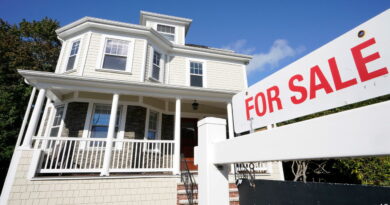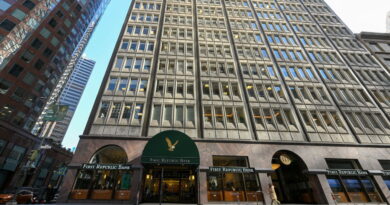Meet America’s disguised property investors
Who really bought the house next door? In America purchasers of residential property typically fall into two categories. First are the owner-occupiers, buying a home and hearth where they can live out their white-picket-fence American dreams. The rest are investors of various kinds. They may be flippers, looking to spruce up an old home and sell it on. They could be buy-to-let landlords acquiring a property to rent it out. Or they could be pure speculators, more interested in betting on prices than collecting rent.
Owner-occupiers have traditionally dominated the market. For most of the decade to 2020 only a sixth of house purchases were made by investors, according to Redfin, a property platform. But their presence is growing. By 2022 the investor share was closer to a fifth.
And their numbers may be far greater than reported, according to a recent working paper from the Federal Reserve Bank of Philadelphia, written by Ronel Elul, Aaron Payne and Sebastian Tilson. The reason is occupancy fraud. When applying for a mortgage, some buyers say they will live in the home they intend to purchase. But then they never move in. These phoney owner-occupiers are investors in disguise.
Why might an investor indulge in this kind of masquerade? Their motives are easy enough to understand. Homeowners who live in their houses often get much better deals on their mortgages. The perks can include gentler interest rates, lower fees and smaller downpayments.
To sniff out fraudulent borrowers, the researchers looked at three kinds of data. In a database of mortgage loans, they identified borrowers who said they planned to be owner-occupiers. Then they looked at those who have more than one “first lien” mortgage, ie the primary loan taken out on a property. (Mortgages for second homes or investment properties are classified differently.) Finally, they used address data gathered by credit bureaus to look for those who did not move within a year of obtaining a new mortgage.
The authors define fraudulent borrowers as those who trip all three measures: they say they will move to the new property, they take out a second owner-occupier mortgage and then they never move. Once these disguised investors are added back in, the pool of mortgage-backed investors is 50% larger than commonly measured. That, in turn, suggests that total investors’ share of home purchases could be 20% higher than previously thought.
This finding raises three potential concerns. First, it implies that investors are more influential in the market than they appear. People are wont to blame rootless speculators for America’s rapid house-price rises. A common rebuttal is to point out that investors still represent a relatively small share of purchases. But that defence is weakened if many speculators are going uncounted.
Second, the research raises questions about financial regulation. Mortgage fraud is associated with all kinds of housing-market ills. America’s great property bubble of the 2000s, for example, became notorious for its mortgage mendacity. Brokers turned a blind eye to underwriting standards that required borrowers to show sufficient income or a secure job. Regulators have cracked down on most of this. But occupancy fraud seems hard to stamp out. According to the calculations by Mr Elul and his colleagues, it persists at the same rate today as it did in the early 2000s.
The third problem is that disguised investors are typically not the best kind of borrowers. They are 75% more likely to default on their mortgages than declared investors. And they are more likely to default than true owner-occupiers, too. This makes sense. Investors driven to commit fraud are probably in greater need of the perks their deception allows. Compared with self-declared investors, they may be stretching themselves thin to afford the property they buy. Their downpayments are also likely to be smaller, giving them less skin in the game.
Compared with genuine owner-occupiers, the phoney kind are also probably quicker to indulge in “strategic default”, walking away from a property when its value falls below the debts secured against it (a predicament known as negative equity). Genuine owner-occupiers are often more sentimentally attached to their homes, staying put within their white fences even when their equity turns red.
The housing and mortgage markets are certainly in better shape than they were two decades ago, when the seeds of calamity were being sown. But it is hard to weed out all the bad actors and, therefore, all sources of fragility. House prices are still grinding slowly upwards in America. But if a downturn ever arrives, it may rip the mask off many speculators next door. They do not live in the homes they have bet on. Can they live with the bets they have made? ■



